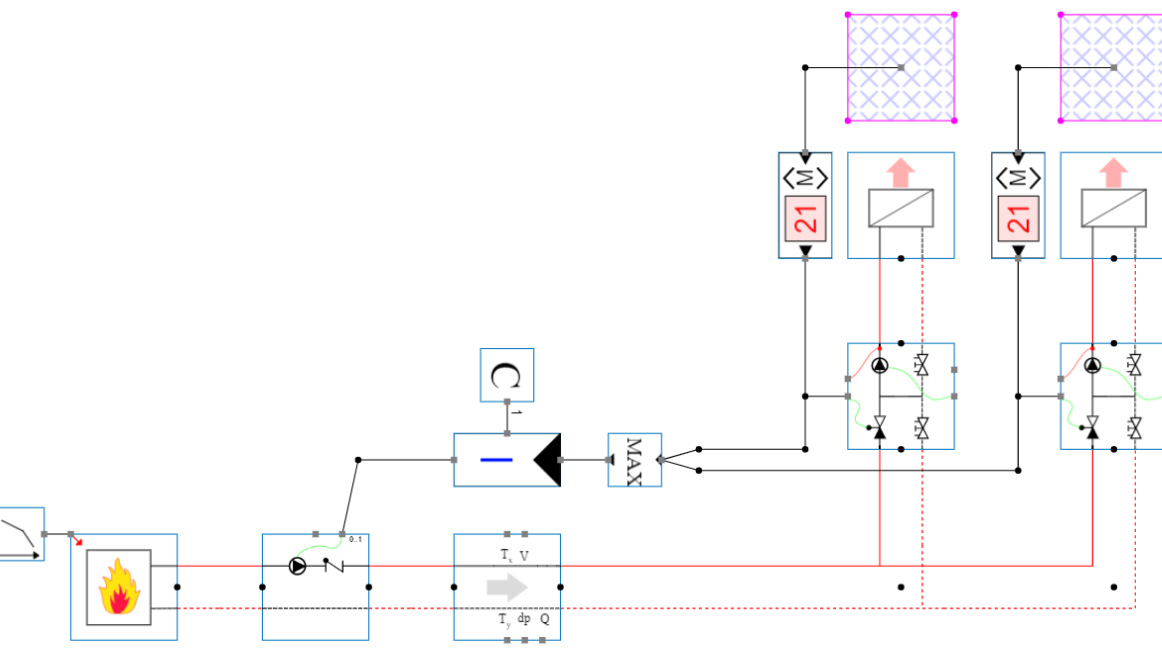Why Load Profiles Define DHW Performance
DHW demand rarely follows a steady pattern. Morning peaks, lunchtime spikes and long periods of minimal flow place very different requirements on the system. When modelling real usage, engineers map these patterns to spaces using the zone library. This makes it possible to understand how often the system is at full load, how frequently it cycles, and how much flow is required to maintain comfortable delivery temperatures.
A system designed only for peak flow may appear oversized during normal operation. Conversely, a system designed without realistic peaks risks long waiting times, temperature dips and user discomfort.
How Piping Layout and Circulation Affect Temperature Stability
The layout of the distribution network strongly influences DHW performance under varying load. Long branches, undersized return lines or poorly positioned recirculation paths can cause temperature delays or excessive heat loss. The hydraulic structure of a system is shaped by resistance in the piping, and small layout decisions can lead to large performance differences at part-load.
Circulation loops, in particular, require careful resistance balancing. If one loop has much lower resistance than others, most of the flow will prefer that route, leaving distant taps slow to heat or unable to maintain stable temperature.
Storage, Mixing and Thermal Behaviour
Many DHW systems include buffers or cylinders to absorb peak demand. This can help smooth load variations, but only if the storage integrates correctly with the system hydraulics. Principles of thermal stratification and flow behaviour can be seen in thermal storage, which describes how volume, connection height and flow direction influence temperature layers — concepts that equally affect DHW storage.
Poor integration leads to unwanted mixing, collapsing stratification, unnecessary reheating cycles and high standby losses. With correct design, storage stabilises supply temperatures without wasting energy.
Practical Steps to Improve DHW System Behaviour
- Map realistic usage patterns rather than relying on peak-only assumptions.
- Balance recirculation loops so distant branches receive sufficient warm water flow.
- Check that pipe resistance supports predictable temperature rise across outlets.
- Size storage based on realistic peak profiles, not only nominal design flow.
- Ensure temperature stability under part-load through correct mixing and circulation control.
A DHW system that responds well across varying loads provides faster comfort, lower energy usage and more reliable supply conditions.
FAQ: Domestic Hot Water Systems Under Variable Loads



.jpg)
